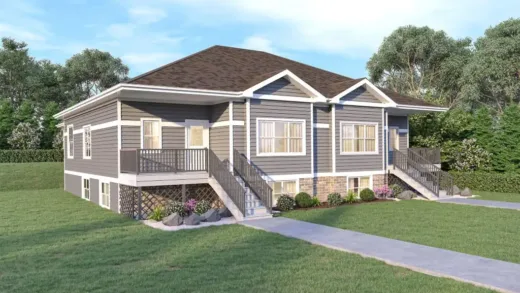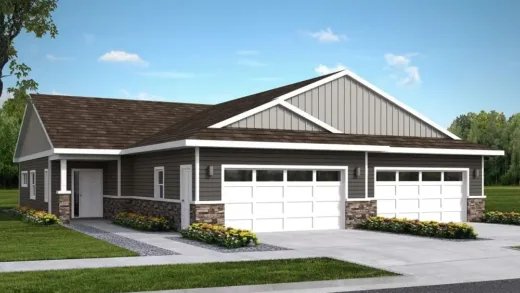Dane County, home to the state’s capital, Madison, has seen significant demographic shifts over the years, particularly among condominium (condo) owners. Understanding these trends provides insights into the evolving real estate market, the county’s economic landscape, and the lifestyle preferences of its residents.
This article explores who is buying condos in Dane County, including age groups, professions, and the demographic changes over time.
Contents
Historical Context and Overview
Dane County has experienced substantial growth over the past few decades, driven by a robust economy anchored by the University of Wisconsin-Madison, state government operations, and a thriving tech sector. This growth has been accompanied by an increasing demand for diverse housing options, including condos.
Condos, often perceived as a middle ground between renting apartments and owning single-family homes, have become increasingly popular. They offer a relatively affordable entry point into homeownership, lower maintenance responsibilities, and amenities that appeal to various demographics.
Age Groups and Condo Ownership
Millennials (Born 1981-1996)
Millennials, currently aged 28 to 43, are one of the largest groups purchasing condos in Dane County. This generation has faced unique economic challenges, including student debt and delayed career advancement due to the Great Recession. However, as they advance in their careers, many millennials are now entering the housing market. Condos appeal to millennials due to their affordability compared to single-family homes, lower maintenance requirements, and urban locations that offer proximity to work, entertainment, and social activities.
Gen X (Born 1965-1980)
Generation X, now aged 44 to 59, represents another significant segment of condo buyers. Many Gen Xers are at a stage in their lives where their children are leaving home, leading to a need for downsizing. Condos provide a convenient and often luxurious living arrangement with amenities like fitness centers, pools, and social spaces that cater to an active lifestyle. Additionally, the lock-and-leave convenience of condos appeals to this group, who may travel more frequently or own secondary properties.
Baby Boomers (Born 1946-1964)
Baby Boomers, aged 60 to 78, are also prominent condo owners. As they retire and look to downsize from larger family homes, the appeal of condos increases. Condos offer ease of living with minimal upkeep, accessibility features, and a sense of community. This demographic values the security and community aspects of condo living, along with proximity to healthcare facilities and recreational activities.
Professional Demographics
Young Professionals and Tech Workers
Madison’s burgeoning tech scene, anchored by companies like Epic Systems and numerous startups, has attracted a young, educated workforce. Many young professionals working in tech, research, and related fields prefer condos for their modern amenities and central locations. These professionals value the convenience of living close to work, nightlife, and cultural attractions.
Healthcare Professionals
The presence of major healthcare institutions, including the University of Wisconsin Hospital and Clinics, attracts a significant number of healthcare professionals. Doctors, nurses, and medical researchers often prefer condo living for its convenience and proximity to work, especially in downtown Madison and surrounding areas.
Academics and University Staff
The University of Wisconsin-Madison employs a large number of academics, researchers, and administrative staff who often choose condo living. The university’s influence creates a demand for housing that offers convenience and amenities conducive to a busy lifestyle, which condos typically provide.
Shifts in Demographics Over Time
2000’s: Expansion and Urbanization
In the early 2000’s, Dane County saw a surge in condo development, particularly in Madison. This period was characterized by urban expansion and an influx of young professionals and students who preferred living close to the downtown area. The condo market was fueled by low interest rates and a growing population drawn to Madison’s vibrant economy and lifestyle.
2010’s: Diversification and Downsizing
The 2010’s brought further diversification in the condo market. The Great Recession had a lingering impact, making condos an attractive option for those seeking affordable homeownership. During this time, Baby Boomers began to downsize significantly, increasing the demand for condos with accessibility features and community amenities. Millennials, many of whom delayed homeownership due to economic factors, started entering the market in larger numbers as their financial situations improved.
2020’s: Post-Pandemic Shifts
The COVID-19 pandemic has influenced demographic trends among condo owners. Remote work has allowed more flexibility in living arrangements, prompting some residents to seek condos in suburban areas of Dane County for more space while maintaining proximity to urban amenities. There has been a notable increase in demand for condos with home office spaces and high-speed internet connectivity. Additionally, the appeal of community living in condos with shared amenities has grown, as people seek social connections post-lockdown.
Geographic Preferences Within Dane County
Downtown Madison
Downtown Madison remains a hotspot for condo ownership, attracting young professionals, university staff, and retirees who enjoy the vibrant urban environment. The proximity to restaurants, cultural institutions, and the university makes it a desirable location. High-rise condos with modern amenities dominate the skyline, catering to those seeking a cosmopolitan lifestyle.
Suburban Areas
Suburban areas like Fitchburg, Middleton, Sun Prairie and Stoughton have seen increased interest from condo buyers. These locations offer a balance between urban and suburban living, with more space and often more affordable options than downtown Madison. Young families and professionals who prefer quieter neighborhoods with good schools and parks are drawn to these areas.
Waterfront Properties
Dane County’s numerous lakes, including Lake Mendota and Lake Monona, make waterfront condos highly desirable. These properties attract a mix of retirees seeking serene living environments and professionals who appreciate the scenic beauty and recreational opportunities. Waterfront condos often come with premium prices but offer unmatched views and a unique lifestyle.
Future Trends and Projections
Sustainable and Smart Living
The future of condo living in Dane County is likely to be influenced by sustainability and smart technology. Younger buyers, particularly millennials and Gen Z, are increasingly prioritizing eco-friendly buildings with energy-efficient features and sustainable practices. Smart home technology, offering enhanced security, convenience, and energy management, is also becoming a key selling point.
Affordable Housing Initiatives
As housing affordability continues to be a concern, there may be a push towards developing more affordable condo units. Local government initiatives and partnerships with developers could lead to the construction of condos that cater to middle-income buyers, addressing the housing needs of a broader demographic.
Aging Population
With an aging population, the demand for senior-friendly condos is expected to rise. This includes units with accessibility features, healthcare facilities, and community services that cater to the needs of older adults. Developers may focus on creating age-restricted communities that offer a blend of independence and support.
Conclusion
The demographic trends among condo owners in Dane County, Wisconsin, reflect broader social and economic patterns. From young professionals and tech workers to retirees and downsizers, condos cater to a diverse range of buyers. Over the past few decades, the market has evolved to meet changing demands, influenced by economic conditions, lifestyle preferences, and technological advancements.
As Dane County continues to grow and change, the condo market will likely adapt to new trends, including sustainable living, affordability, and the needs of an aging population. Understanding these trends provides valuable insights for developers, policymakers, and residents, ensuring that the county remains a vibrant and inclusive place to live.









